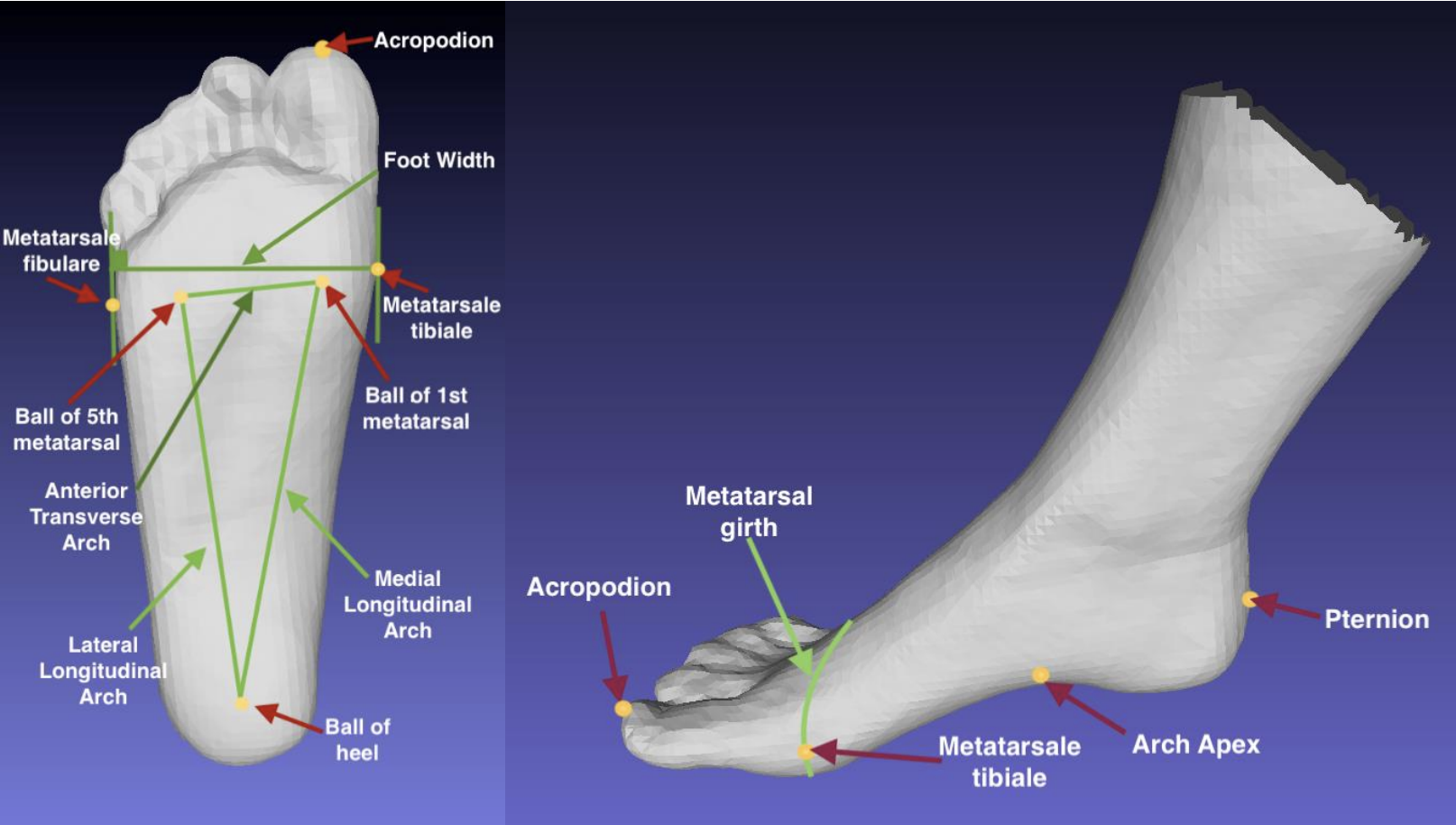With the release of Structure SDK 3.5.0, we’re excited to introduce automatic foot landmark detection, a powerful tool that enables accurate, repeatable, and fast foot measurements directly from a 3D scan.
But what exactly is landmark detection? How does it work? What measurements can you extract, and how can they be used in orthotics, footwear design, or diagnostics? Let’s dive in.
What is Foot Landmark Detection?
Landmark detection is the process of automatically identifying predefined anatomical points on the foot. Instead of manually marking scans, the SDK uses advanced machine learning models trained on thousands of foot anatomy scans to consistently locate key points with high accuracy.
Once these landmarks are identified, they are used to generate precise 2D cross-sections (“slices”), enabling automatic calculation of important measurements.
How Automatic Landmark Detection Works
-
Training the Model: The system is trained on a large dataset of foot scans, with iterative corrections until confidence levels are consistently high.
-
Identifying Landmarks: The AI identifies anatomical points such as the heel, toe tips, and arch.
-
Generating Slices: Using those points, the SDK slices the 3D model to calculate measurements like length, width, and arch height.
This process eliminates guesswork, reduces user error, and speeds up the workflow for orthotics and footwear applications.
Key Foot Landmarks Detected
The system detects eight anatomical landmarks, including:
-
Acropodion – Furthest point of the foot (tip of toe)
-
Pternion – Back of the heel
-
Heel Point – Center of the heel
-
First Metatarsal – Ball of the big toe
-
Last Metatarsal – Ball of the smallest toe
-
Metatarsal Fibulare – Outer edge of the foot’s widest point
-
Metatarsal Tibiale – Inner edge of the foot’s widest point
-
Arch Apex – Highest point of the arch

Measurements Available
From these landmarks, developers can automatically calculate:
-
Foot Length – Heel to toe
-
Foot Width – Widest medial-to-lateral point
-
Metatarsal Girth – Circumference around metatarsal joints
-
Arch Height – Floor to arch apex
-
Navicular Drop – Difference between loaded vs. unloaded arch height
These measurements are widely used in orthotic design, custom footwear, and clinical diagnostics.
Accessing Foot Measurements in SDK 3.5.0
-
For Developers: Landmark detection and measurement workflows are built into Scan Deck (available in your developer console). Results can be exported as JSON for integration into custom applications.
-
For Non-Developers: Measurements are available directly in the Structure Capture app.
Accuracy and Applications
Measurements are optimized for accuracy and consistency, making them valuable in:
-
Orthotic and prosthetic design
-
Custom footwear manufacturing
-
Sports performance analysis
-
Medical diagnostics
By exporting JSON data, you can also integrate foot measurements into third-party CAD/CAM software or healthcare workflows.
Conclusion
Automatic foot landmark detection in Structure SDK 3.5.0 transforms the way foot measurements are captured, making the process faster, more consistent, and more reliable. Whether you’re building orthotics, designing footwear, or researching biomechanics, this feature helps streamline workflows and improve outcomes.